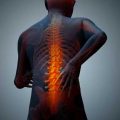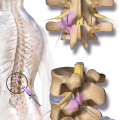Table of Contents
Can surgery help degenerative disc disease? Here’s the thing, surgical treatment is only recommended for debilitating lumbar degenerative disc disease after at least six months of non – surgical treatment. Most cases of DDD can be managed through non – surgical methods, and doctors usually don’t require a patient for surgery unless it is necessary. In this article, you’ll learn can surgery help degenerative disc disease?
Spinal surgery is a kind of elective treatment. This means that it’s up to the patient if he/ she want to undergo this type of surgery. If you’re thinking of undergoing surgical treatment, it’s highly recommended that you consider a lot of factors before proceeding to make the decision of having surgery, such as the length of recovery, who will look after you, your finances etc. You also need to be rehabilitated or go through pain management during recovery. All these factors will affect your daily life.
Can Surgery Help Degenerative Disc Disease: Lumbar Spinal Fusion Surgery
The standard surgical treatment for those diagnosed with lumbar DDD is what’s called as fusion surgery. This is when 2 vertebrae are grafted together. Fusion surgery can help lessen the pain through eliminating motion at the spinal segment.
Fusion procedures can differ in how the spine is approached. It also differs in the tools or methods used to fuse the joint. All spinal fusion surgeries consist of the following:
Removal of the entire spinal discs from the disc space that is affected; also known as discectomy.
The set – up for fusion may consist of placing a bone graft or other instruments that may further stabilize the spine. These include implants, screws, rods or plates which will attach the 2 vertebrae that’s being fused.
Fusion After Surgery
The vertebrae then grow together which will eventually change the joints to an immobile structure. Fusion happens after a few months following the surgery, and not during the procedure itself.
Physical therapy and pain medication and/ or back brace may be prescribe after the patient goes through surgery in order to manage the pain. These will also help strengthen the low back when the spine begins to heal. Recovery from the surgery can take about a year because the vertebrae needs time to grow together and the spine also needs to heal.
Spinal Fusion Surgery
There are different ways for lumbar spinal fusion surgery. It usually involves the following:
Adding of bone graft to the spinal segment
You need to set up response biologically that can cause the graft of bone to grow between the 2 vertebral elements in order to create a bone fusion
The bone fusion will then result in one fixed bone that results in replacing a joint. This will stop the joint segment’s motion.
For patients diagnosed with Lumbar Degenerative Disc Disease and Lumbar Spondylolisthesis, if excessive motion at a vertebral segment results in inability to function or severe pain, a lumbar fusion may be considered. Other related conditions can be treated through spinal fusion surgery which includes an unstable spine, scoliosis, fractures or even deformity.
Artificial Disc Replacement Surgery
Artificial disc replacement has been developed as an alternative for those who don’t want to go through spinal fusion surgery. This consists of removing the full spinal disc, returning the disc space to a natural height and also implanting an artificial disc device.
These devices are typically made of the following:
- Two metal endplates; this is attached to the vertebral bodies which typically includes a porous coating that encourages the bone to graft to the device.
- A central core made of surgical – grade plastic that bends or turns in order for the spinal segment to move.
This surgery is intended to maintain movement in the spine that’s similar to natural movements. It reduces the chance of increased pressure placed that’s adjacent spinal segment.
Total Disc Replacement
In a total disc replacement surgery the exterior, interior as well as endplates of a disc is all replaced using a single surgical implant.
Success with total disc replacement also depends on the patient selection. Artificial disc replacement is recommended for DDD that’s been confirmed through rigorous diagnostic process. This includes identification on an imaging scan.
Lumbar Artificial Disc Replacement
Lumbar artificial disc replacement is only necessary if non – surgical treatments are not effective at least after 6 months. Surgeries are usually not recommended if a patient also has spondylolisthesis. This happen when one vertebra keeps slipping on another, or bony lumbar spinal stenosis. This is narrowing of the spinal canal.
Recovery from artificial disc replacement surgery can last for more than six months as the body needs to heal from the surgery and the spine also needs to adjust to the device.
Lumbar Artificial Disc Surgery Recovery
A short hospital stay after the lumbar artificial disc replacement surgery is required in order to monitor pain levels as well as supervise mobility. Standing and walking is usually required before the patient can leave the hospital. A walker or cane may also be needed a few days after surgery. We hope in this article you learn the answer to your question, can surgery help degenerative disc disease?






 I love to write medical education books. My books are written for everyone in an easy to read and understandable style.
I love to write medical education books. My books are written for everyone in an easy to read and understandable style.